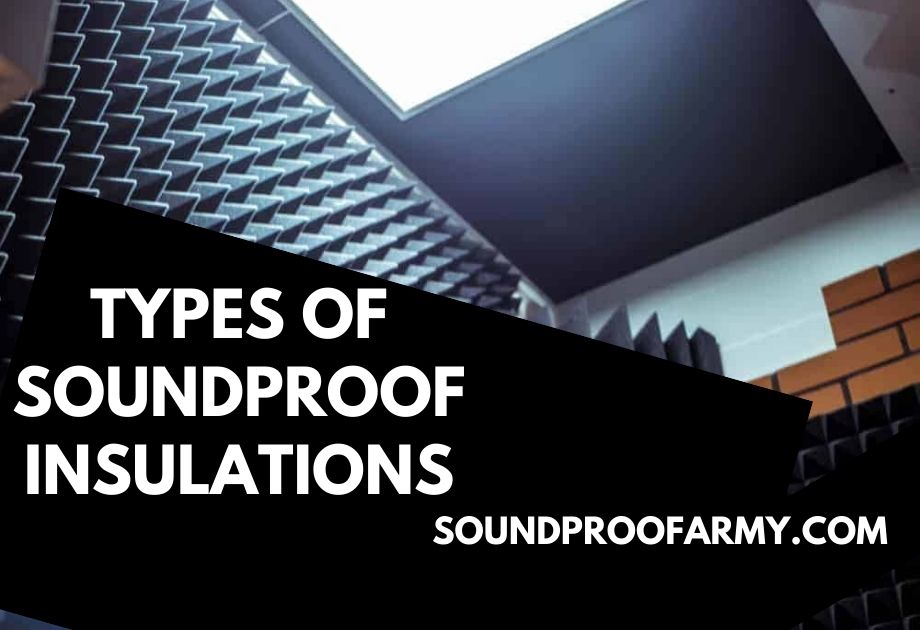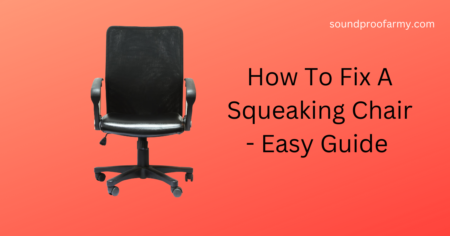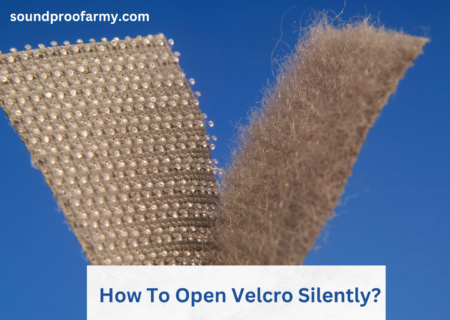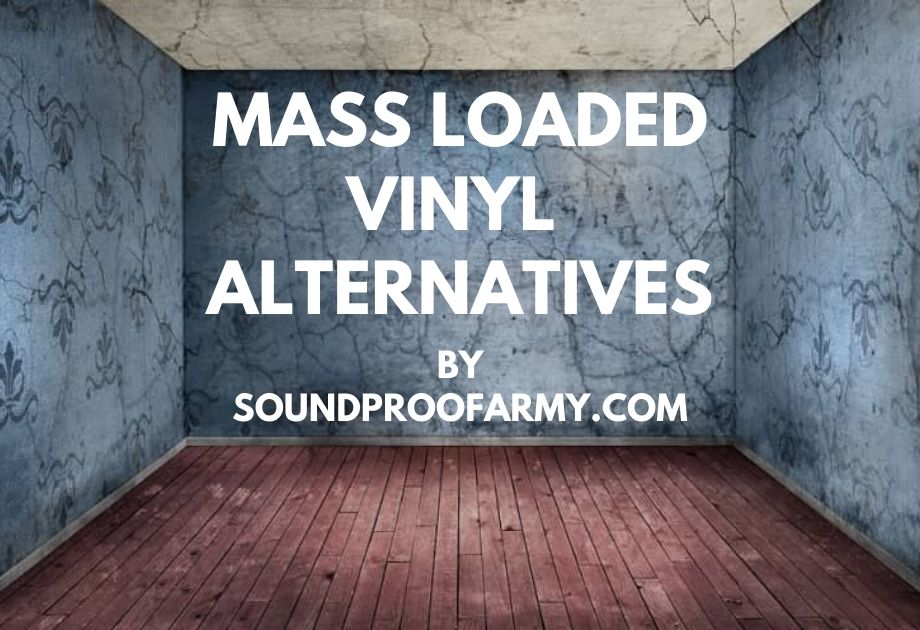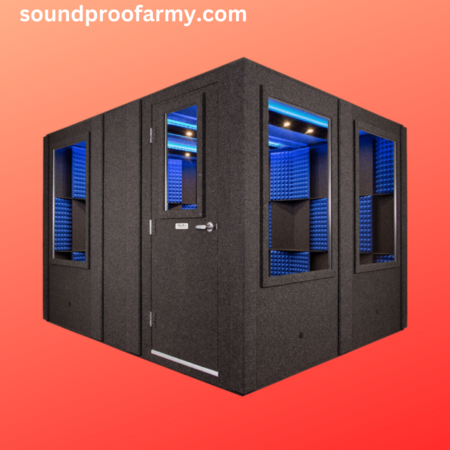Whether you are looking for soundproofing insulation or simply insulating your home in general, there are many types of soundproof insulation that you can use. We have listed some best insulation types for soundproofing.
- Mineral Wool
- Blown-In Cellulose
- Fiberglass
- Foam Board
- Spray Foam Insulation
These all types of insulations can be used in walls, ceilings, floors, and other parts of your home. To know more details read the article till the end.
Table of Contents
Types of Residential Noise Problems
Residential Soundproofing Solutions Residential soundproofing solutions can be achieved through a variety of methods.
One type is Active Acoustic Control which consists of interior design alterations, exterior additions and various building materials.
These measures make it significantly more difficult for outside noises to enter an inside space.
Passive acoustic control includes double-paned windows that improve insulation so sounds cannot penetrate walls and ceilings.
Another way to solve residential noise problems is with structural changes such as adding additional layers between floors or even putting in cork flooring on the bottom level only instead of carpeting the whole room.
Soundproofing Insulations: Types of Soundproof Insulation
Soundproofing Insulation
One type that is available for purchase is known as soundproofing insulation which may be suitable depending on what your needs are. For some, this might not be enough but it will work in a pinch and reduce noise from inside or outside by up to 20dBs, either way, they make an excellent choice if you’re just looking for something quick and easy at first glance.
Selection Criteria
The selection of insulation depends on the objective of heat prevention or the blocking of noise.
At first, let’s understand the criteria for selecting the best insulation:
Sound Transmission Class (STC)
Soundproofing insulations come in many different types. One of these is the Sound Transmission Class (STC).
The STC rating specifies how much outside noise will be blocked when it travels from one side to another through a barrier made up of specific materials.
It’s important to note that this does not take into account other factors such as air gaps, floor and ceiling heights, or carpeted surfaces on either side of the wall.
For example, A typical bathroom has walls with sheetrock panels between studs at 16 inches apart; for this type of wall, an STC rating in the 50s means that a person on one side can hear what is being said by someone speaking quietly at the other end.
For those walls with sheetrock panels between studs spaced at 24 inches apart about the same as you would find for exterior walls and interior partitions in most homes today.
Noise Reduction coefficient (NRC)
Noise Reduction coefficient is a number expressing the energy reduction of sound waves when they bounce off an object.
Soundproofing insulation materials have high Noise Reduction coefficients, which means that they will absorb more sound than normal building materials. The higher the NRC value, the better noise reduction properties it has and vice versa.
The most common insulation materials used in soundproofing are fiberglass, polyurethane foam, and recycled denim. Of these three insulation material types, the most effective one is dense or expanded polystyrene (EPS).
The thicker the EPS board is installed on the walls and ceilings of a room, the better noise reduction properties it will have.
R-Value Of Insulation
In this criteria, R stands for the resistance of heat and the waves of sound.
These values are used to measure how well a material prevents heat and sound.
You can say in simple words that it’s a measure of the insulator’s ability to resist heat. The higher the R-value, the better it can resist cold temperatures.
Common materials you’ll find in-home insulation include fiberglass and polystyrene foam sheets (or expanded). Both have an R-value between four and six per inch so this isn’t a significant difference.
Detailed Overview of Insulation Types:
Mineral Wool
Mineral wool is a type of soundproof insulation that provides noise reduction with its dense, heavy, and porous material. It can be applied as blocks or boards which are then positioned in the gap between two surfaces to block noise from entering through it.
As an alternative, mineral wool can also be used as a loose fill – this being loose pieces of mineral wool laid on top of the flooring surface for noise protection and thermal insulation purposes.
Wool’s Soundproof Insulation is suitable if you have high noise levels due to machinery operating near your home.
When put into service correctly, there will be no more irritating vibrations or loud noises emanating from inside your house while people outside may still notice some sounds passing through but at a much lower decibel level than from inside.
Blown-In Cellulose
Blowing cellulose into wall cavities, ceilings, and other spaces can also be an effective sound dampening strategy but many people don’t know what it entails.
Cellulose insulations are typically made from recycled newspapers treated with a fire retardant so they do not present any health risks when blown indoors for construction purposes.
They are often mixed with fiberglass strands for added strength as well as resistant qualities like mold resistance and thermal mass properties because these fibers soak up water vapor which helps them resist heat transfer during periods of high humidity (or cold).
The celluloses provide sound-damping qualities because sound waves are either absorbed or reflected back into the air.
Obviously, there are no sound dampening materials that will eliminate sound transmission entirely from a place.
Fiberglass
Fiberglass soundproofing insulation is one of the most durable soundproofing materials. It’s also very easy to install, making it a popular choice for sound dampening products.
This can be installed in just about any area where noise reduction is needed: walls, floors, and ceilings with standard drywall or plaster construction without reinforcement; directly over subfloor plywood before installation of finished floor coverings; under tile and marble linoleum on a concrete slab as well as many other areas that need sound protection from external sources like traffic, roads and airports.
When fiberglass soundproofing insulation is applied in an enclosed space such as a room within your home, exterior noises are absorbed and diminished in sound intensity.
This type of soundproofing is also effective at reducing noise levels from within the room, such as sounds from television shows or music played on a stereo system.
With these sound-dampening insulation materials installed behind walls you will find that exterior noises are only slightly audible if any sound can be heard.
Foam Board
Foam Board soundproofing sound insulation is a material that can help reduce noise pollution. These boards are made of layers of polyurethane foam and they have many different applications in the world today.
They’re typically used for soundproofing, sound absorption, or vibration isolation; but other uses also include sound insulation, sound barriers, and fire retardants.
The typical type of application for Foam Board soundproofing, sound insulation is as a noise barrier to prevent external sounds from entering the interior space or room where it’s being used.
It can be applied in an architectural way – on the walls between rooms with glass windows – so that you don’t hear what’s happening inside your neighbor’s apartments or houses; this will also cut down on any echoing which may occur.
Another use would be at construction sites to reduce construction noises coming into neighboring buildings/offices nearby. The boards are typically fitted onto existing surfaces such as drywall, wood paneling, and concrete slabs mixed with mortar (in order to make them load-bearing).
Spray Foam Insulation
Spray Foam is soundproofing insulation that can be applied to the walls, ceilings, and other surfaces in your home. It works by blocking sound from entering or exiting a structure through an airtight seal between the barrier material-typically closed-cell polyethylene sound insulation foam–and the noise source itself.
This also minimizes outside noise transfer into your space with its ability to create a tight seal around pipes, wires, and cables as well as close spaces like doorways and windows.
The process of applying Spray Foam Insulation involves using specialized equipment which applies hot liquid foam on both sides of the sound barrier before it cures for approximately 20 minutes.
If you’re interested in learning more about how Spray Foam Insulation soundproofing your home, please reach out to DIY HOME SOUNDPROOFING for more information.
Above discussed Insulation is applied by sound insulation professionals who specialize in this type of work and can soundproof any room or space in your house the way you want it.
It has the ability to create a tight seal around pipes, wires, and cables as well as close spaces like doorways and windows soundproofing insulation can be a valuable asset to have in your home.
Conclusion
At first, you should check the criteria of the soundproofing insulation that what amount of noise you are soundproofing,
Above mentioned hacks and types of insulations discussed will help you check the criteria and the best type of insulation to soundproof your needs.

